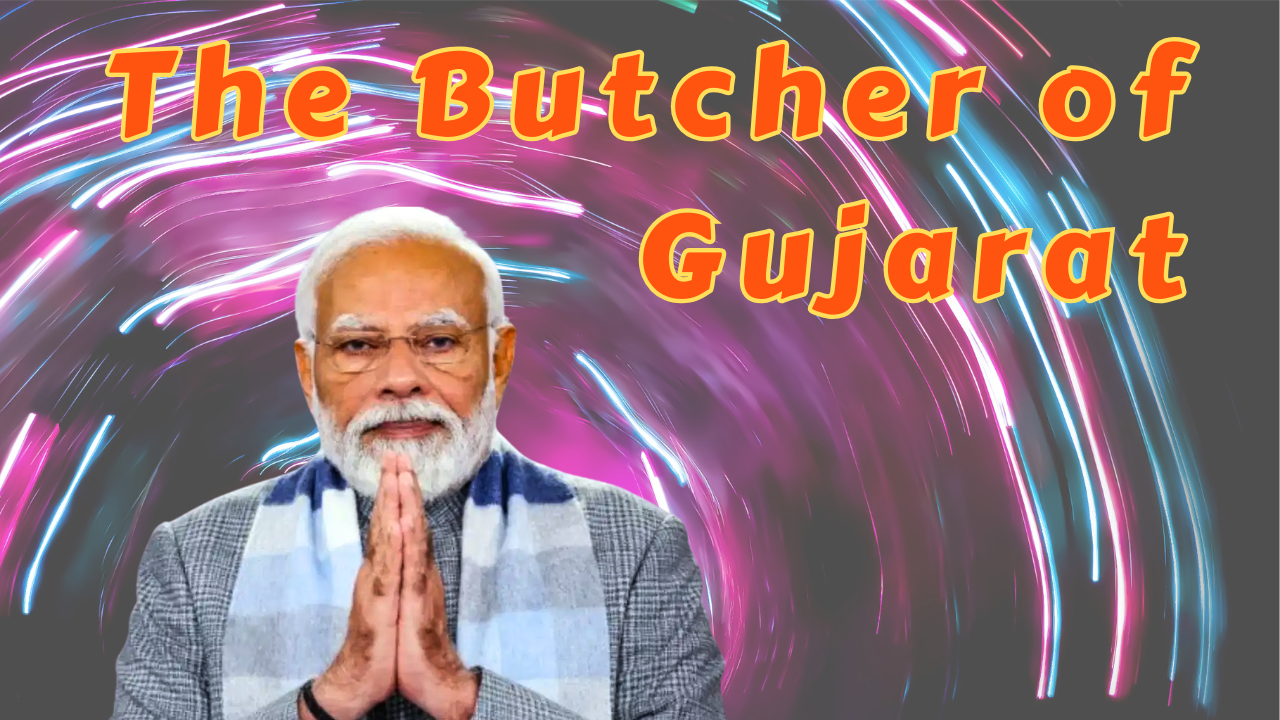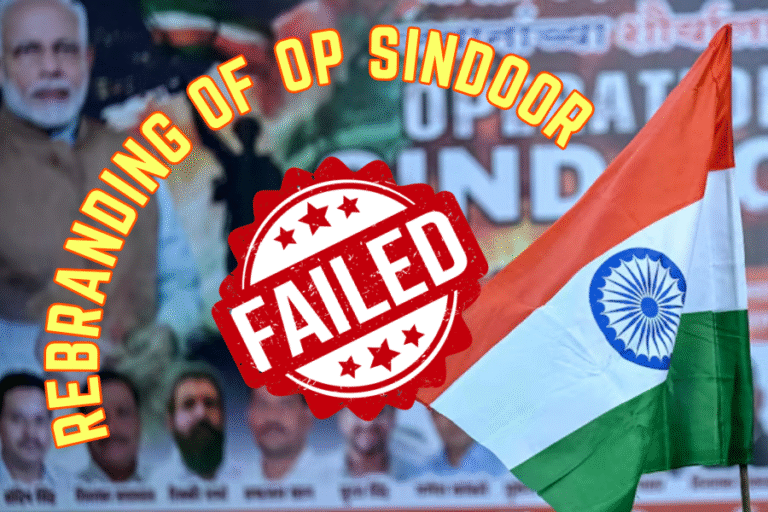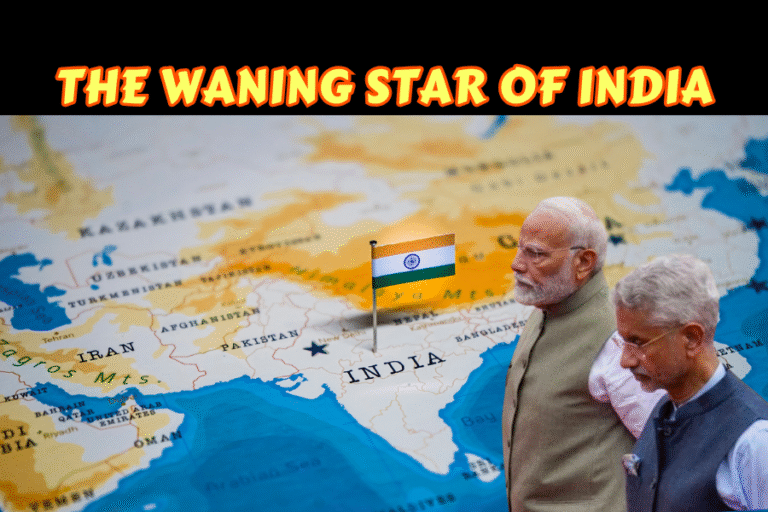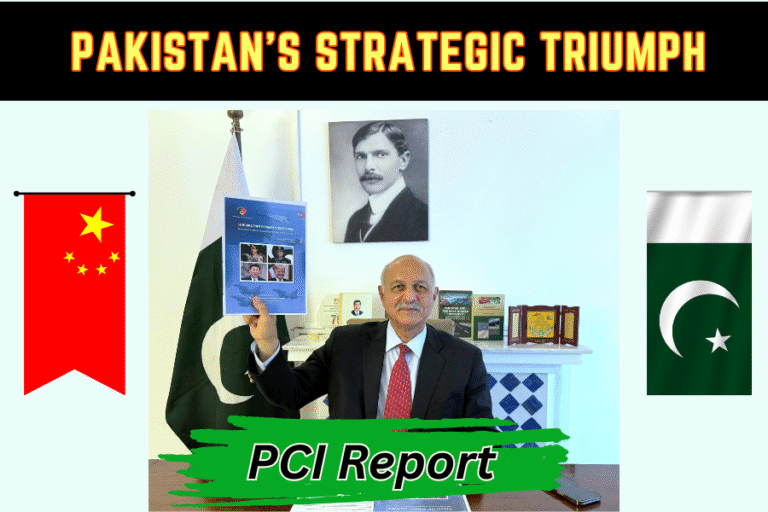(By Khalid Masood)
Introduction
India, cloaked in the glittering robes of “the world’s largest democracy,” has long sought to project an image of civility, responsibility, and global leadership. Yet beneath this carefully curated exterior lies a darker reality—a state whose policies and conduct repeatedly flout international norms, disregard human rights, and endanger regional peace. From its earliest years, India has pursued a strategy not of coexistence, but of domination; not of diplomacy, but of deceit.
This exposé lays bare twelve undeniable instances of India’s rogue conduct—each rooted in historical evidence and geopolitical consequence. These are not isolated episodes, but chapters in a chilling saga of expansionism, covert aggression, and moral bankruptcy.
1. Military Annexations: Silencing Princely States Through Force
Hyderabad (1948): The Invasion That Democracy Forgot
In 1948, the Indian Army rolled into the princely state of Hyderabad under the guise of “integration.” The operation—codenamed Operation Polo—was a brutal show of might against a Muslim ruler, the Nizam Mir Osman Ali Khan, who sought independence. Over 36,000 Indian troops stormed the region, enforcing a siege that culminated in a massacre of horrifying scale. Civilian deaths are estimated between 30,000 to 200,000—a tragedy buried for decades until the suppressed “Sunderlal Committee Report” surfaced in 2013, confirming systematic atrocities.
| Map of Princely State of Hyderabad |
Junagadh (1947): Plebiscite at Gunpoint
Junagadh—a Muslim-ruled state that legally acceded to Pakistan—was swiftly blockaded and forcibly absorbed by India. The so-called plebiscite conducted under Indian military occupation claimed a 99.95% vote for India, a statistic so implausible it drew international skepticism. Behind the democratic veneer was a calculated subversion of self-determination, executed under duress and disinformation.
Munawar: A Forgotten Betrayal Buried by Force
Amidst the chaos of Partition in 1947, Munawar—a small but strategically placed princely state in India—sought to join Pakistan, reflecting the will of its Muslim-majority populace and its ruler’s inclination. However, India, intolerant of such defiance, swiftly moved to crush the aspiration. Indian forces surrounded the state, forced the ruler to rescind his decision, and annexed Munawar into the Indian Union at gunpoint. The voice of Munawar’s people was silenced, its identity erased, and its dream of choosing its destiny—snatched away by coercion and colonial-style suppression. This episode, like so many others, has been buried in dusty archives, but remains a dark testament to India’s ruthless ambition and disregard for the right of self-determination.
| Map Showing location of Princely States of Junagarh & Manavender States |
Kashmir: The Longest Occupation of the Modern Age
Kashmir’s forced accession to India stands as one of the most agonizing betrayals in modern history—a wound that bleeds to this day. Under intense pressure and with little choice, Maharaja Hari Singh signed the Instrument of Accession in October 1947, inviting Indian troops into a land whose overwhelming majority of inhabitants were Muslim. What followed was not integration—it was occupation.
Despite clear United Nations resolutions calling for a free and fair plebiscite, India denied the Kashmiri people their right to self-determination. Instead, it sent in soldiers—700,000 of them as of now —transforming the beautiful valley into a heavily militarized prison. There is a check-post at nearly every kilometer, on roads and narrow village tracks alike. Surveillance, intimidation, and routine harassment are the tools of rule. For the 13 million people of Indian-occupied Kashmir, freedom remains a dream deferred by barbed wire and the barrel of a gun.
Since 1948, atrocities against Kashmiri Muslims have been widespread and systematic. Arbitrary arrests, enforced disappearances, and the demolition of homes as collective punishment are everyday occurrences. Families are torn apart without cause. Young boys vanish in the night, only to return in coffins or not at all. Pellet guns have blinded hundreds, leaving behind a generation that can no longer see the sky of their homeland.
In August 2019, India took a draconian step further by revoking Article 370, stripping Kashmir of its special constitutional status without the consent of its people. Internet blackouts, mass detentions, and a suffocating military lockdown followed. Human rights groups across the world condemned the move as colonial and authoritarian, yet India flaunted it as a nationalist victory.
To the world, Kashmir may be a dispute. But to the people who live there, it is the largest open-air prison on the planet. Their voices were silenced. Their dignity crushed. Their land was militarized and enslaved illegally.
2. The Dismemberment of Pakistan: 1971 and the Birth of a Tragedy
The 1971 secession of East Pakistan was not merely a civil war—it was a geopolitical ambush orchestrated by India. As internal unrest grew, India inflamed the flames by arming and training the Mukti Bahini, and sheltering over 10 million refugees to overwhelm Pakistan’s capacity. In a premeditated move, Prime Minister Indira Gandhi signed the Indo-Soviet Treaty of Friendship to shield India from Western retaliation, then launched a full-scale invasion.
Declassified archives and diplomatic cables now confirm India’s clandestine training camps, propaganda campaigns, and psychological warfare aimed at weakening Pakistan from within. Bangladesh may have emerged as a nation, but the scars of external manipulation and violent partition run deep.
3. RAW’s Covert War: India’s Subversive Footprint in Pakistan
For decades, Pakistan has contended with an insidious campaign of cross-border subversion, orchestrated by India’s premier intelligence agency—the Research and Analysis Wing (RAW). From financing separatist militias to sponsoring deadly attacks on critical infrastructure, RAW’s shadow looms large over Pakistan’s security landscape.
The arrest of Commander Kulbhushan Jadhav in 2016—a serving Indian naval officer apprehended in Balochistan—was a watershed moment. His recorded confession laid bare the contours of RAW’s covert operations, detailing its role in facilitating terrorist activities, particularly through the Baloch Liberation Army (BLA), and targeting Pakistan’s economic lifelines in Gwadar and Karachi. Despite India’s denials, Jadhav’s presence on Pakistani soil and the intelligence gathered from his interrogation continue to stand as compelling indicators of state-sponsored subversion.
Pakistan’s comprehensive 2020 dossier submitted to the United Nations exposed further links between RAW and high-profile attacks, including the BLA’s assault on the Pearl Continental Hotel in Gwadar—an operation seen as a direct hit on China-Pakistan Economic Corridor (CPEC) interests. Although the dossier’s full evidence remains classified due to operational sensitivities, it outlined RAW’s coordination with anti-Pakistan networks operating from Afghan soil.
More recently, the March 2025 hijacking of the Jaffar Express by BLA insurgents, resulting in over two dozen civilian deaths and the hostage-taking of 400 passengers, again brought RAW under scrutiny. Pakistan’s Inter-Services Public Relations (ISPR) and Foreign Ministry linked the attack to Indian handlers operating through Afghan intermediaries, citing intercepts and recovered American-made weapons as proof—links India swiftly dismissed as “baseless.”
RAW’s alleged nexus with the Tehreek-e-Taliban Pakistan (TTP) has also raised red flags. Despite TTP’s stated ideological opposition to India, Pakistani intelligence maintains that the group has received logistical and financial support via Afghan-based networks with RAW’s fingerprints. The resurgence of TTP violence in Khyber Pakhtunkhwa in early 2025, coinciding with regional instability, reinforces Islamabad’s concerns.
Pakistan sees a pattern: the increasing sophistication of BLA attacks, the targeting of Chinese personnel and infrastructure, and the convergence of multiple anti-state actors with foreign sponsorship. For Pakistan, this is not mere conjecture—it is a war fought in the shadows, enabled by hostile intelligence.
4. Assassins Without Borders: India’s Global Kill List
India’s descent into extraterritorial assassinations has shattered its credibility on the global stage.
- Canada (2023): Prime Minister Justin Trudeau openly accused Indian operatives of assassinating Hardeep Singh Nijjar, a Sikh activist, on Canadian soil. Intelligence intercepts corroborated by Five Eyes allies sparked a diplomatic crisis.
| Hardeep Singh Nijjar |
- USA (2024): The FBI exposed another chilling plot targeting Gurpatwant Singh Pannun, a Sikh separatist and American citizen. RAW was named directly, marking an unprecedented breach of U.S. sovereignty.
Such actions, more reminiscent of outlaw regimes than democracies, signal a dangerous escalation of India’s extrajudicial tactics abroad.
5. Atrocities Under BJP Rule (2014–Present)
The BJP’s rise, rooted in Hindutva’s vision of a Hindu-majoritarian state, has coincided with increased violence against Muslims, Christians, and Dalits. Human Rights Watch, the U.S. Commission on International Religious Freedom (USCIRF), and scholars like Christophe Jaffrelot document a pattern of hate crimes, discriminatory laws, and state complicity, emboldening extremist groups. The Sangh Parivar’s rhetoric, portraying Muslims and Christians as “foreign” and Dalits as subordinate, fuels mob violence, lynchings, and forced conversions as following:
- Muslims: Targeted through cow vigilantism, anti-conversion laws, and communal riots, with policies like the Citizenship Amendment Act (CAA) marginalizing them.
- Christians: Face church burnings, assaults on clergy, and accusations of forced conversions, particularly in tribal and Dalit communities.
- Dalits: Despite some BJP outreach, Dalits face caste-based violence, exclusion from affirmative action if converted to Christianity or Islam, and exploitation by Hindutva groups as “foot soldiers.”
- State Role: Police and judicial inaction, coupled with BJP leaders’ inflammatory rhetoric, creates impunity for perpetrators.
6. False Flags, Propaganda, and Reckless Military Adventurism
From staged strikes to reckless escalation, India has demonstrated a troubling readiness to gamble with regional peace:
- 2016 Surgical Strikes: A theatrical narrative unsupported by independent verification. Pakistan reported no casualties, and Indian media celebrated an event shrouded in spin.
- 2019 Balakot Airstrike: India bombed an alleged militant site following the Pulwama incident. However, satellite imagery and international observers found no trace of damage—only craters in barren hills.
- 2025 Pahalgam Massacre and Operation Sindoor: The tragedy peaked in April 2025 when 27 Hindu tourists were killed by unknown gunmen in Kashmir. Without evidence or investigation, India pointed fingers at Pakistan, unleashing Operation Sindoor—an airstrike campaign that killed 29 Pakistani civilians, including children in mosques and homes. CNN and other global outlets later confirmed Indian Rafale jets were shot down during Pakistan’s counter-response.
These reckless provocations risk dragging the subcontinent into nuclear brinkmanship—and reveal a government more concerned with optics than peace.
The Doctrine of Akhand Bharat: A Blueprint for Expansionism
At the heart of India’s regional ambitions lies a dangerous ideological vision: Akhand Bharat—an imagined “Undivided India” that stretches from Afghanistan to Myanmar, swallowing present-day Pakistan, Bangladesh, Nepal, Sri Lanka, and beyond. What was once a fringe fantasy of the Rashtriya Swayamsevak Sangh (RSS) has now crept into the public and political mainstream, echoed by ruling party members and even depicted in murals inside India’s new Parliament building.
This vision isn’t just symbolic—it’s strategic, ideological, and deeply provocative. It signals an alarming shift from coexistence to domination. For neighbors, Akhand Bharat is not a map—it is a warning. It tells smaller nations: you do not truly exist; you are, in the minds of some, merely delayed provinces of a Hindu Rashtra.
| Akhand Bharat Map |
Maldives: From Friendship to Subjugation
For years, India projected itself as a regional benefactor to the tiny archipelago of the Maldives, offering aid, training, and so-called development. But over time, this assistance began to resemble intervention, and eventually, interference. Troops were stationed. Intelligence networks expanded. Local voices warning against the “India Out” movement were silenced by New Delhi’s influence.
The result? A rising wave of resentment among the Maldivian people who now see their sovereignty being traded for diplomatic favors and economic dependence. The recent change in leadership reflects this growing resistance, but India’s diplomatic muscle remains ever active, seeking to reshape the political future of the Maldives in its favor.
Nepal: The Silent Strangulation
Despite deep cultural and religious ties, India’s treatment of Nepal has often resembled that of a master toward a vassal, rather than a neighbor. Trade blockades have been used as political weapons—choking an entire nation into submission. When Nepal dared to amend its constitution without India’s blessing, the response was swift and punitive. Supplies dwindled. Borders closed. Hospitals ran out of medicine.
Maps were redrawn without consultation. Rivers dammed without consent. India speaks of friendship, but acts with hegemony. To many Nepalese, the message is clear: sovereignty is negotiable—but only if India says so.
Sri Lanka: Aid with Strings Attached
In the aftermath of Sri Lanka’s economic collapse, India stepped in—not just with loans and fuel, but with expectations. Ports, energy deals, and infrastructure contracts followed. Indian corporations entered where diplomacy had opened the gates. While China’s presence is often criticized in Colombo, India’s quiet encroachment has received less scrutiny but is equally strategic.
Military presence, intelligence coordination, and media influence are growing. The sovereign decisions of a nation still healing from civil war are now filtered through the lens of Indian approval. The island’s autonomy is at risk of being slowly bartered away in the name of relief and recovery.
Conclusion
India’s carefully crafted façade of democratic decency stands shattered. Its history is littered with forced annexations, cross-border sabotage, propaganda-fueled militarism, and now, state-sponsored assassinations on foreign soil. It is not merely a regional bully; India is evolving into a rogue state whose actions jeopardize not only South Asian peace but global stability. In fact, India has transformed itself into a destabilizing force, unworthy of the democratic ideals it pretends to uphold. Beneath the veneer of democracy lies an empire built on suppression, deceit, and aggression. India’s illegal annexations, state-sponsored terrorism, extraterritorial killings, and hegemonic doctrines expose it as a rogue state hiding behind diplomatic spin. Until India is held accountable and respects its neighbors’ sovereignty, peace in South Asia will remain a distant dream.







